And when he planned to steal our sunlight, he crossed that line between everyday villainy and cartoonish supervillainy.
—Waylon Smithers
What is it that makes a villain a supervillain? What quality is it that defines an antagonist as more than a threat, more than a foil? As something extraordinary?
The easy answer is that a supervillain is a villain with super powers, but that’s not a sufficient answer. If you name three supervillains off the top of your head, I guarantee you two of them have no powers at all. And there are many monstrous villains in fiction that have powers that still wouldn’t ever be considered a supervillain.
Similarly, we can say a supervillain must have specific accouterments—a costume, a nom de guerre, henchmen, a hideout—which is another way of saying that a supervillain must have a distinct, instantly recognizable aesthetic. They can have a costume, or a very specific fashion sense. Or their powers manifest in extremely specific ways. And, unlike superheroes, supervillains are often marked by some distinct physical characteristic: a scar, bald head, bleached skin, burned face, something that makes them stand out as immediately recognizable (um, no matter how poorly they’re drawn). And certainly that’s part of it, too.
But in the end, the truly defining feature of a supervillain is that they warp their world around themselves. Their presence, their actions, their choices change the rules of the story, raise the stakes, and make the heroes adjust to them rather than the other way around. This is why so many supervillains are masterminds. A rampaging monster can disrupt the status quo, but the ability to outplan and manipulate opponents can create an entirely new one.
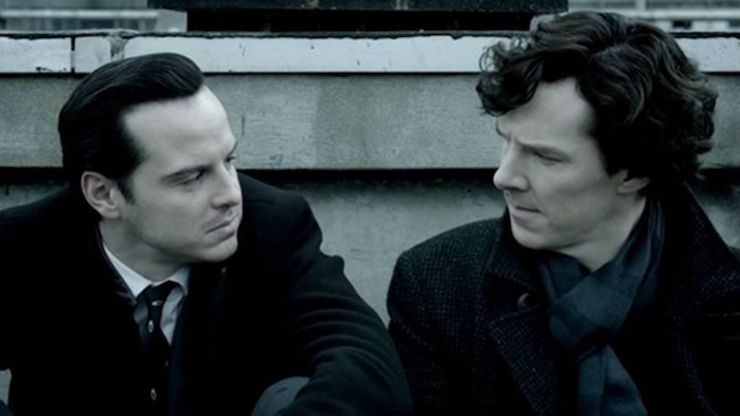
So a supervillain isn’t just powerful, a supervillain is uniquely powerful in their setting. A genius consulting criminal in a detective serial is a supervillain. A wizard bully in a wizard school is not. So a supervillain doesn’t just have a distinct style, a supervillain has a unique style. An Imperial Stormtrooper is instantly recognizable as a Stormtrooper, but indistinguishable from any other Stormtrooper.
And importantly, a supervillain must be motivated by more than just basic needs. They have to have goals that require them to change their world. Someone using phasing technology to steal food is hardly a supervillain. An agent of an oppressive regime is “just following orders” for their own survival. A supervillain, on the other hand, has no master, not even their own physical needs, other than their ambition. Even if they appear to work for someone else, a supervillain chafes at being controlled and constantly schemes to replace their boss.
In this way, to be a supervillain is to be a revolutionary figure. Even in cases where they have nominally won, where they rule a country or secretly run the world, they have some ambition to further their power, some plan that will change things even further to their advantage. To be a supervillain, you need to have a plot.
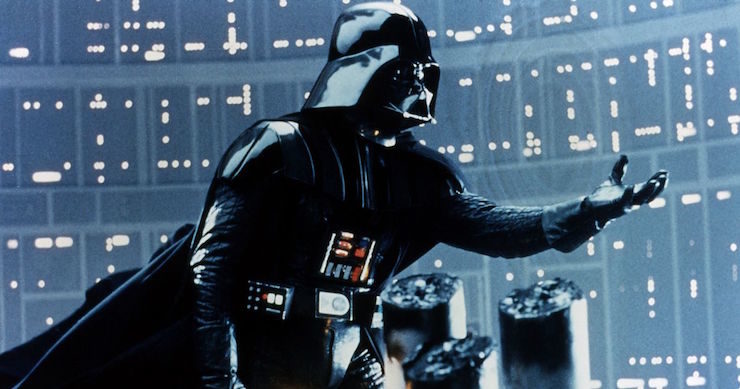
As such, there are some stories you just can’t tell using a supervillain. Stories about the banality of evil, exploring how systemic and institutional oppression overrides the morals and compassion of people, don’t work as well if the main antagonist is somehow particularly evil, particularly to blame, on an individual basis, for the problems affecting their world. And the supervillain’s unique style means superhero detective stories are usually pretty simple: if someone cracks open the first Gotham Bank with an overgrown vine, the list of suspects is going to be awfully short.
Still, this gives us a good rubric for dividing the villains from the supervillains: 1. unique powers or abilities; 2. unique visual style; 3. ambition to change their world. So Mr. Burns was already more powerful than anyone in Springfield, and he had a distinct look (thanks to literally being a cartoon villain), but he wasn’t a supervillain until he blocked the sun with a giant disk, something that would immediately and dramatically change the lives of everyone in his town.
Perhaps the greatest supervillain outside of superhero comics is Darth Vader. He has powers that are extremely rare in the galaxy (at least when he’s introduced in A New Hope), a nightmare-inducing visual and aural design, and he answers only to the Emperor, (a) who is also a supervillain that (b) Vader plans to overthrow, just the second he gets his kid on board with the plan.
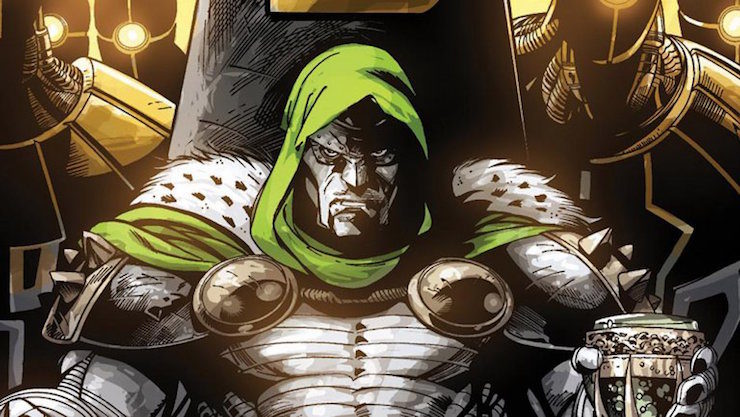
It makes sense that Darth Vader is a great supervillain, because he’s a palette swap of Dr. Doom. No, really. Vader has Doom’s full face mask and cape. Vader’s helmet has the same silhouette as Doom’s hood. He has the same combination of magic and tech powers. He has the same calm, disinterested demeanor failing to disguise his constant violent rage. He also controls an army, and remains more powerful than the forces that fight under him. He also surprises his enemies with lavish feasts. Vader was even once good friends with one of the heroes and now blames said hero for the horrific burn scars hiding behind his mask. Vader is Doom. Look into your heart, you know it to be true.
A good example of the distinction between a villain and a supervillain is the difference between Voldemort and Dolores Umbridge. Both are detestable sadists. Both have a distinct look; Umbridge likes pink, Voldemort has no nose. Both are powerful, both in a magical sense and in their control over others. But Umbridge, for all her cruelty, is an agent of wizard prejudice, an enforcer of the magical elite. She is happy to serve, easily manipulated, and more importantly, easily replaced by those that would use her. Voldemort, on the other hand, wants to rule the wizard and muggle world, forever, and goes to extraordinary lengths, even within in the world of Harry Potter, to achieve his all-consuming ambition.
Most Bond villains are supervillains. They have impossible (and impossibly complex) plans, distinct visual looks (Diamond skin! Metal mouth! Bowler hat!), and they operate independently of any government or business they themselves don’t control. (One of the oddities of Bond is that while James is an agent of the British crown, his enemies almost never work for another nation. They’re almost always independent operators, either working for their own self-interest or as mercenaries without any ideology whatsoever.)
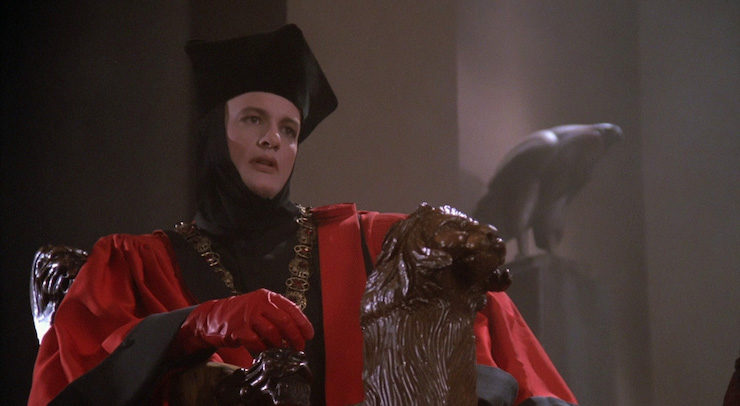
Getting away from movies, Star Trek has hundreds of villains, but only two supervillains: Q and Gul Dukat. Q, obviously, is Mr. Mxyzptlk from a dimension with fewer consonants. Gul Dukat starts out as an Umbridge-esque banality of evil villain, the face of an oppressive regime that indulged his base desires while inflicting cruelty. But when he declared vengeance on all of Bajor, became an emissary of the Pah-Wraiths, and started his own cult—well, he crossed that line, warping the whole conflict around himself.
Khan, on the other hand, is not a supervillain. Sure, he has distinctive pecs and super genes, but his actual goals are rather banal: a desire to protect his people and, failing that, enact revenge on the one man he holds responsible for their plight. He’s not trying to change the world, despite having a gun that can literally do that. I’m not saying he’s a bad villain—just that he’s not a supervillain.
Buy the Book
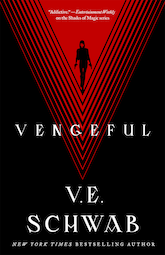

Vengeful
Other TV supervillains are The Master from Doctor Who, who has all the powers and lack of fashion sense that we expect of a Time Lord, but driven by the desire to remake all of time and space with her/him on top. The X-Files’ Cigarette Smoking Man and Game of Thrones’ Littlefinger are supervillains, puppet masters who move the plot along as if they were writers of the show. And on Buffy, the monsters of the week are, well, monsters, but only the Big Bads—who have grand, overarching plans, that require something more than a pointy piece of wood to the heart to be stopped—really rise to the level of supervillains.
While video games are full of villains—as their other name, bosses, implies—they’re usually already in charge, thus lacking in ambition, and therefore not revolutionary in nature. The exceptions come from RPGs, particularly Final Fantasy, where villains like Kefka and Sephiroth rise in power along with your progress, so that the actions you take to save yourself and your loved ones are small parts of their overarching plots.
And I really think gets to heart of the issue: all the costumes and powers and henchmen and creepy skull-shaped lairs in the world don’t make one a supervillain as much as one simple overriding idea: a desire to change to world and the willingness to do anything, nor matter how evil and no matter how impossible, to do it.
Steven Padnick is a freelance writer and editor. By day. You can find more of his writing and funny pictures at padnick.tumblr.com.










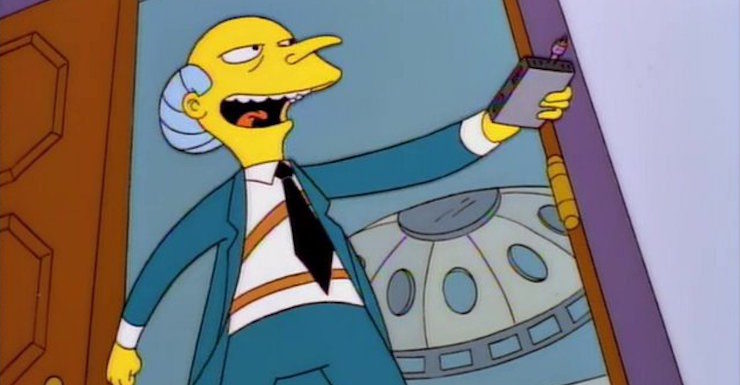
One simple definition of a supervillain would be a foe that exists for a superhero to fight, one powerful or brilliant enough to be a worthy threat, especially on an ongoing basis. But you do have a point that there are supervillain stories without superheroes, so that would be an incomplete definition at best.
I would argue that Star Trek has at least one more supervillain, the Borg Queen. Technically the Queen is merely the face and voice of the entire Borg Collective, but when First Contact introduced her and Voyager reused her, it was specifically to put a face and personality on the faceless threat of the Borg, so that the heroes would have a more clear-cut and personified villain to fight and (repeatedly) destroy. The Queen, therefore, is a flamboyant villain with plans for nothing less than galactic conquest and the assimilation of all life, a recurring antagonist with a personal connection to the heroes (first Picard, then Seven of Nine) and with superpowers they can only barely stand against.
As for Khan not being a supervillain, you seem to be judging him solely by his movie appearances and not “Space Seed,” in which his ambition was not merely to protect his people or to take petty revenge on one man, but to launch a campaign of conquest, to rebuild his kingdom on an interstellar scale, with the takeover of the Enterprise just the first step toward that goal. Even in The Wrath of Khan, it was implied (far too vaguely) that he’d pursue galactic conquest once he took his revenge on Kirk; the reason he stole the Genesis Device, presumably, was not just as bait for Kirk, but as a weapon to be used for threatening or conquering worlds. I guess you could say he was an aspiring supervillain whose plans never really got off the ground.
A pity about Dukat though. He was so much more interesting as a regular villain before crossing over into super-villainy.
“Metal mouth! Bowler hat!” But Jaws and the other guy were henchmen. And Jaws became a good guy at the end of “Moonraker” (the first Bond movie I saw in the theater).
I was just about to comment that Jaws and Oddjob were henchmen, and wiredog got in first. Good dog!
The ultimate supervillain’s power is his brain — genius that has uprooted itself from morals and ethics. The tradition goes back to Elizabethan England, with Iago and others like him. (The character type was called a “Machiavel”.) The evil genius then surrounds himself with minions who have extraordinary physical powers — Jaws and Oddjob, for example.
@3 & 4: I think it’s certainly possible for a supervillain to be a subordinate to a bigger supervillain. The article already mentioned Darth Vader. And a lot of comics have supervillain teams with multiple villains working for a single leader — the Injustice Gang, the Legion of Doom, the Frightful Four, the Sinister Six, the Brotherhood of Evil Mutants, etc. These often include characters who have operated as independent supervillains before joining a group led by someone bigger.
@5,
We were noting that Jaws and Oddjob were henchmen. Sure, a henchman can be a subordinate supervillain, but neither of those guys were supervillains. Heck, at the end of “Moonraker” Jaws was arguably a better person than Bond.
@6/wiredog: There’s nothing to prevent a supervillain from reforming and becoming a superhero. Magneto and Dr. Doom have done it (temporarily), as have Dr. Octopus and Green Goblin II (Harry Osborn), and arguably Venom (though he was more of an antihero). Lex Luthor has had a few short-term stints as a superhero. Catwoman and Harley Quinn are arguably more superheroes these days than villains, and Catwoman’s Marvel counterpart the Black Cat has also worked on both sides of the line. Hawkeye and Rogue both started out as villains before becoming heroes, as did Quicksilver and the Scarlet Witch (both of whom have crossed back over to villain once or twice). Arguably Xena, Warrior Princess is a supervillain who became a superhero.
There are a lot of consonants. It’s the vowels that are missing.
You forgot the evil laugh.
@8/birgit: In my ST:TNG novel The Buried Age, I worked in a bit where Q explained why he called himself Q: “Because U will always be behind me.”
@10 -.-
The difference between a villain and a supervillain?
Presentation.
@2 – Dukat was best when he had a day job and really enjoyed his work. For me his peak as a villainous character was the scene where he tried to explain to Weyoun why it was a bad idea to commit genocide on the population of the Earth, a wonderful clash between emotive evil and bureaucratic evil.
Star Trek has a lot more supervillains, by this definition, than just Q and Dukat.
TOS has:
Gary Mitchell, from Where No Man Has Gone Before, who gained a unique appearance (silver eyes) and became convinced he was a god and tried to impose his will on the crew, literally warping the world around himself through telepathy.
Charlie, from Charlie X, has similar unique powers but no real ambition yet, just kind of flailing around destructively. Call him a supervillain in the making?
Korby, from What Are Little Girls Made Of, who wants to conquer the galaxy by replacing Federation members with android duplicates. And also put his own brain inside an android.
Dr. Adams, from Dagger of the Mind, who uses a brainwashing device to take total control of inmates at his asylum. Not a galactic threat, but he certainly warps his immediate environment around him by making people subservient to him.
Possibly Finney, from Court Martial, who fakes his own death and uses his control of the Enterprise computer to frame Kirk and try to destroy the Enterprise and kill all aboard. His motive is revenge, which is kind of petty compared to conquest, but lots of supervillains are motivated by revenge and he definitely warps the story around him through his actions. His “amibition to change the world” is to change it into a world without Kirk in it. (It’s not clear whether his being in control of the ship’s computer counts as a “unique” power or ability, though.)
On the other hand, Landru from Return of the Archons has the unique abilities and power of a supervillain (it’s a computer that acts as dictator for a whole planet) but maybe not the ambition (it’s not trying to change anything, it’s already in control).
As mentioned, Khan in Space Seed does want to take over the Federation. Clear supervillain.
Lazarus from The Alternative Factor, who is trying to blow up the entire universe.
And that’s just season 1!
@13 – Someone was gracious enough to put that scene on YouTube. It’s just as great as you say. https://www.youtube.com/watch?v=YDpxuWj2A7o
@12/random22 – you can’t argue with logic like that. :)
One of Kim Possible’s many recurring foes, Señor Senior, Sr. would be very interested in this article as he is very concerned with becoming a proper supervillain, much to his son’s dismay! It takes a lot of work – apparently it’s not enough just being voiced by Ricardo Montalbán (aka KHAAAAAN!!!)
@7/ChristopherLBennett – I think the point that was being made about the henchmen [Odd Job, Jaws, et al] was while they meet one criteria (distinctive style), they don’t meet the other metrics to promote them from being merely villainous henchmen to being super-villainous henchmen. While fulfilling the role of henchmen, they don’t warp the world around them. They have no plans to change the world, they’re obediently following orders.
Jaws in his swan-song arguably does actively have his own agenda, but that only comes into play after he’s done his heel/face turn. That (to me) means he was merely a villain that then becomes a superhero…
@17. It of course requires a proper Evil Laugh.
And I feel a distinction could be made for what comics have started calling “supercriminals,” who are basically supervillains (as defined in this article) without the ambition; guys (or, more rarely, girls) who use their electro-gauntlets or invisibility suits or genius intellects to rob banks or work as hit-men or create designer drugs. They want to get rich(er than they could working legally), but don’t particularly want to upset the whole status quo.
@18/WillMayBeWise: The thing is, though, that “supervillain” is a word that can be defined as broadly as “superhero” can. It gets used for just about any comics character who’s something other than a conventional good guy or bad guy. You can try to narrow in on a general theme defining what it’s most commonly used for, but imposing a rigid definition based on arbitrary exclusivity — “It doesn’t count unless it meets these exact parameters” — is mere pedantry and prescriptivism rather than reflecting how the word is actually used. The definition should be a starting point for exploring the idea, not an endpoint.
That’s what I love most about the movie “Unbreakable”, that it is essentially about this very topic. Figuring out identities, and that one needs the other to reflect off of, in order to help form that identity.
Does Dolores Umbridge really have a distinct style? Lots of women like pink. I doubt anyone would notice her in an average British crowd the way they would notice Voldemort or Darth Vader.
@22/jamesboggie: She’s distinctive within the context of the story itself. The narrative emphasizes that banality and takes it to an extreme in order to contrast it with her utter malevolence. It’s the context and presentation that matters. (The Joker wouldn’t stand out in the context of a circus, but he certainly stands out in the context of a typical Batman story.)
Gary Mitchell has the powers, but not the attitude for being a good supervillain.
Now, imagine if _Harry Mudd_ was the one that got zapped by The Barrier …
Does Dr. Heinz Doofenshmirtz make the grade or is he merely a wanna-be supervillain?
(Oddly, a number of the kids and Dr. Lawrence Fletcher clearly qualify any time they want to claim the title of supervillain.)
@24/jmeltzer: Harry Mudd seemed to be mostly interested in drugs, female beauty, a comfortable lifestyle and the money needed to maintain it. With godlike powers he might become a modern Dionysus, forcing everyone to worship him in exchange for endless orgies.
@26/Jana: In issue 39-40 of DC’s first Star Trek comic (written by the late Len Wein), Harry Mudd came upon an alien artifact that “magically” granted his every wish (except letting him leave the planet, so it was kind of an “I, Mudd” rehash), and though he did make himself emperor of the place, it was more of a whimsical fairyland than a Bacchanalian paradise. I never really considered how out-of-character the lack of sexual gratifications was.
As for drugs, Harry was interested in selling them or employing them as part of a con, but I never got the sense he was a user himself. It wasn’t drugs specifically that interested him; he just wanted to profit by any means necessary, and sometimes that involved illicit substances.
@27/Christopher: Oh, I agree that he wasn’t a drug user. But since he sold drugs repeatedly, and always drugs that had something to do with beauty and love and sex, I assume that he specifically liked finding new and interesting drugs and selling them. I can’t imagine him selling e.g. weapons with the same enthusiasm.
@28/Jana: True, two of his four episodes involved “love drugs” of one sort or another, but consider the other crimes that he was described to have committed prior to or in between those episodes — chronologically including bank robbery (according to Discovery), smuggling, transporting stolen goods, passing counterfeit currency, patent fraud, multiple counts of spaceship theft, and property fraud (including selling aliens Starfleet Academy and their own ocean). So drugs and sex aren’t really a major, recurring theme in his career; it’s just happenstance that they were involved in two of his three encounters with the Enterprise.
If anything, there are more instances of Harry committing acts of piracy. In addition to his various offscreen ship thefts, he committed a time-loop attack on Discovery; he suborned piracy when he convinced Norman to capture the Enterprise; and he hijacked an Enterprise shuttle with Nurse Chapel as a hostage. Overall, though, I’d say fraud is his primary preferred category of crime.
I suspect that what most criminals want most is to get away with it. By that I mean more than not getting caught; “getting away with it” seems to reflect their philosophy of life, their way in which they think it makes sense to relate to other people. I say this because obviously for the vast majority of criminals, crime isn’t a reasonable way to make a living; it doesn’t lead to success, happiness, or contentment. They are basically sociopaths, and Harry Mudd TOS would seem to be the relatively passive version, while Harry Mudd STD would seem to be the more active version.
@20/ChristopherLBennett – yes and no. It seems to me the whole concept of the article is create a framework to define what a super villain is, and what they aren’t. Yes, ultimately the concept is as woolly as the concept of superheroes. The edges are grey and nebulous.
The article asks what defines a super villain, and does an admirable attempt at answering the question. It’s easy to point to Lex Luther and say “yes”, and “no” while pointing at Hugh Jones (the owner and CEO of Roxxon Oil). It’s easy to say “yes” pointing to the Green Goblin, but “meh, more of a super criminal” when pointing at the Shocker. <tips hat to 19/Cybershark for pointing out this distinction >.
YMMV, but neither henchmen really make the grade. The article suggests that for one super villain to serve another, the narrative should show that the subservient one has their own agenda. That they see themselves as the star of their story, not a disposable tool in someone else’s. That seems right to me. Starscream is clearly a henchman, but he also clearly has his own agenda, and so also qualifies as a super villain. Odd Job isn’t given much characterisation past “he’s hard as nails” and “he really enjoys cutting people, usually with his hat”. He (for me) doesn’t qualify, because Odd Job has no discernible agenda separate from his boss. We don’t even know if he’s just in it for the money. Jaws is depicted in much the same way in the films until Moonraker. He’s already a henchman when he meets his girlfriend and acquires an agenda different to his employer. For me that’s not enough to promote him to super villain in Moonraker, since it’s his motivation for his heel/face turn.
@31/Will: When you use definitions as an excuse to build up impassable walls, you’re using them wrong. You can’t force reality to fit an arbitrary mold like that. The reality is that the word “supervillain” is used in a lot of ways that wouldn’t fit the definition of this article, and one article can’t override the rest of reality. It can only try to narrow in on the most common elements of how the term is used, but that shouldn’t be about ruling out uses that actually are utilized, because that’s simply counterfactual. A typical usage is not the only “correct” usage.
In fact, I’d say this article is flawed because it doesn’t differentiate between the usage of “supervillain” within comics/superhero fiction and its usage elsewhere. Those are not the same. In comics, the “super-” prefix applies to villains the same way it does to heroes, and thus can encompass anyone whose costume, methods, or abilities are unusual. The definition discussed in this article is pretty much the more mainstream usage, the way the term is used in spy movies and the like where you don’t have people running around in colorful costumes or having superpowers, and thus other parameters are needed for defining “super-.” So I think it’s a mistake to insist that definition needs to be applied within superhero fiction as well as beyond it.
@32/ChristopherLBennett – <shrugs> good points all. I don’t necessarily agree with them, but they’re straying away from the point I’m trying to make. It seems I’m not making my point clearly. Let’s give it another go:
The article tries to define what a super villian is, then uses examples that do not fit the critiria the article defines. Setting aside whether Odd Job can be defined as super-villain by other standards, he is not a super-villain as defined by the standards of the article.
I just hate it when mediocre villains call themselves supervillians!
I don’t think Odd Job counts as a Super Villain. I think of him as merely a Cad.
@8.birgit – You are right, but the article was referring to Q. He’s the one from a universe with fewer consonants. <grin>
Many superheroes have internal conflicts, but many supervillains are often two-dimensional, either vying for world domination or indulging in destruction for the sake of destruction. The Joker is one of the more fleshed-out villains, and his motivation sometimes pulls him into the anti-hero role (when he attacks mobsters, for example). Darth Vader’s motivations are thinner… he’s pissed about his mom, yeah, but is ruling the galaxy going to bring her back? Even if he plans to overthrow Palpatine, isn’t he still a slave to the Dark Side? That would put him in the role of a henchman—a very powerful henchman, to be sure, but his will is no longer his own. (Fortunately for him, he shook off those shackles and thus redeemed himself.)
I’ve been writing in my own super-powered universe, and deliberately blurred the lines. The superheroes fight for “truth and justice,” although mostly to serve what some call Law and Order. The supervillains have what they see as a higher calling: to take down what they see as the “real” villains, those who own almost everything and want your stuff as well. They see themselves as the true heroes, and maybe they’re right. The MC, a young teen who gained a superpower far earlier than typical, is caught between both sides.
Some supervillains have other motivations. One loathes bullies, having been on the receiving end in his youth, and will go out of his way to make them miserable. Another keeps local gangs in check around her hideout, so they don’t bother people who want to be left alone. Of course, all of them are fine with profiting from their Robin Hood ways… doing well by doing good? They certainly would agree with @30, “getting away with it” is a major source of satisfaction for them. One villain admits “it’s the busted capers that keep you up at night.”
In the end, villains need a rationale, some reason to believe they’re really the good guys in spite of flouting the law. Unless, of course, they’re mentally ill (I would argue The Joker falls into that category). Facing a mentally ill opponent is all well and good, but would the more rational villains not find ways to help out—if only to protect themselves?
@37,
Yeah, Darth Vader being pissed about his mom … Was I supposed to feel sympathy for him now that its been revealed that he’s just a pathetic loser? Better then that he nurse a lifelong grudge about losing to Judah Ben-Hur.
Ayn Rand’s writing was a bit problematic (and not just politically), but she had an interesting idea that a real SuperVillian has a hatred of the good for being good, and thus seeks to tear down the very idea of goodness and to reveal everyone to be liars, cowards, perverts, etc. because of his or her own failure to be able to be good, and this effectively saves him or her from self-recrimination, i.e. everybody does it, no one is better than anyone else, anyone pretending to be good is just a hypocrite. For her the central quality of goodness then is that one actively seeks to know and to achieve the good, even more than any particular behavior that one decides upon.
Which is sort of exactly what Darth Vader didn’t do. Which makes him a SuperVillian after all, I guess.
@37/Larry Kollar: “The Joker is one of the more fleshed-out villains, and his motivation sometimes pulls him into the anti-hero role (when he attacks mobsters, for example).”
Really? I’d say the Joker is traditionally one of the most pure and nuance-free villains, a force of pure evil and chaos with no other name, no ambiguity, no motivation beyond pure psychopathy, narcissism, and sadism. True, The Killing Joke famously gave him a backstory, but even there, IIRC, the Joker said he saw his past as multiple-choice, and later stories have implied that it was just one of numerous contradictory backstories he offers as justifications for his ultimately inexplicable nature (as seen in the film The Dark Knight, for example). The only time I can think of where he was portrayed as an antihero was in the recent alternate-reality White Knight miniseries where the Joker was “cured” of his psychopathy and became a heroic figure countering a Batman who’d crossed the line and become the villain. He did have a brief solo series back in the ’70s, and there he sometimes went up against other criminals who got in his way, but he was still a bad guy with purely selfish motivations.
“Unless, of course, they’re mentally ill (I would argue The Joker falls into that category).”
That’s the claim, that he and other Batman villains are “insane,” but few of them really fit the legal definition (and the term has no actual medical definition or use). The Joker is not delusional or schizophrenic. He knows he’s committing crimes in Gotham City and fighting Batman and the police, rather than, say, imagining he’s fighting demons in medieval times. He knows that his actions are legally and morally wrong and that they hurt and kill people; he just doesn’t care. That makes him sane but psychopathic. He has a severe antisocial personality disorder, but not one that should render him incompetent to stand trial, because he’s fully capable of understanding the charges against him, and as a devious master criminal who can routinely match wits with the World’s Greatest Detective, he’s certainly intellectually capable of understanding his lawyer’s advice and mounting a coherent defense. So the trope that he’s criminally insane and needs to be treated in Arkham rather than thrown into maximum-security prison is a break from reality for the convenience of the narrative, since a hospital is easier to break out of over and over again.
The Shadow King (X-Men, Legion) seems to meet the criteria. Through Amahl Farouk, David Haller and other mutants with mind control abilities, it can take control of anyone or any number of people it desires and make them do its bidding. The entity did at one time control a global empire, as depicted in The New Mutants series. As a being of the astral plane, it can exist into infinity.
Interestingly, I still can’t quite get myself to think of Darth Vader (or the Emperor) as a supervillain – anymore than I think Luke Skywalker is a superhero. I can’t really articulate what the definition of a supervillain IS, but Darth Vader doesn’t seem to fit – perhaps because of the context. While in Darth Vader’s universe his powers are rare, they’re not unheard of and there’s a whole history/culture behind it in universe. Whereas I think of supervillains as characters that are out of place within our own earth. Also, I tend to think of supervillains as recurring characters that are hatching crazy schemes and plots, which is more a function of genre/storytelling.
Also, that DS9 clip was fantastic.
@41 Darth Vader just is not proactive enough to be a Supervillain. He comes close in Empire, but even there he is mostly acting as an agent for Palpatine. Palpatine is a supervillain of the evil mastermind variety though. A Lex Luthor in the stars.
Yeah, I could maybe see Palpatine as a supervillain, if anybody is in the Star Wars universe. Actually, the more I roll it around in my head, I think it fits. Although he’s a little too ‘puppet master behind the scenes’ – I guess when I think of supervillains I think of somebody who keeps interacting with the heroes directly. Don’t get me wrong, Palpatine is one of my favorite all time villains.
But like you say, Lex Luthor is a similar type, and he counts ;)
There is definitely a place in supervillaindom for the puppetmaster types, as long as they get to cut loose once in a while. Palps final battle with Luke in Jedi and the same with Anakin in Sith, show he can truly cut loose and turn up the camp when he has to.